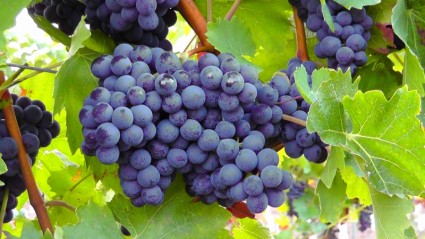Grenache (also known as garnacha) is often seen as an underdog. A grape that simply ends up in a great blend. We tend to overlook that it is a stand-alone varietal, even though it’s one of the most planted of wine grapes in the world.
It’s big, bold and aggressive, but also lovable, friendly and approachable.
Originally from Spain, this grape is widely grown in the southern Rhone region. It spread into France as the kingdom of Aragon expanded its borders. For many years this grape was only used as a blending partner, adding to the finesse of some of the greatest wines of the world. Most Chateauneuf-du-Pape and other Rhone wines are made from a blend using this grape. The average Chateauneuf contains about 10 percent syrah but 65 percent grenache. Today grenache are grown in Spain, Italy, France, California and Australia.
Continuing my promotion of rosé, it is worth noting that some of the best wine made of grenache is rosé. The Saignee Method is an old technique that transforms the grape from a full-bodied red wine to a rosé wine. Saignee is a French term meaning “bled,” referring to the process of running off or “bleeding” a certain amount of free-run juice (juice from freshly picked grapes that is released during the stemming process) using crushed dark-skinned grapes, after a short pre-fermentation maceration. The aim is primarily to produce a lightly pink wine with more flavor compounds.
THE VALUE
- 2013 Yellow Tail Grenache, Australia (about $8 retail)
THE SPLURGE
- 2013 D’Arenberg Custodian Grenache, Australia (about $20 retail)
